
|
U. S. CIVIL WAR
PHOTOGRAPHS
|

|
THE WILDERNESS
(PAGE 2 OF 12)
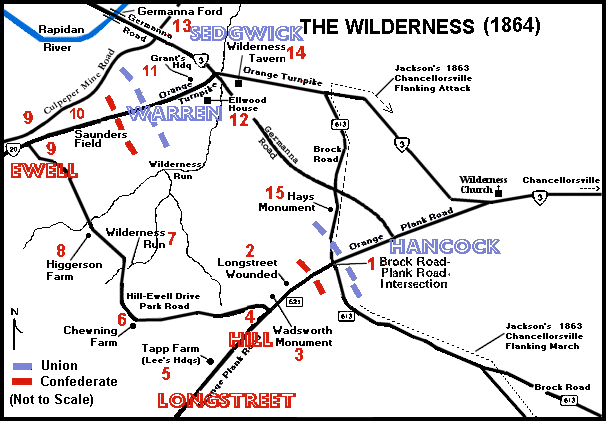
(Explanation of this Map)
| |
UNION COMMAND
In the spring of 1864, General Ulysses S. Grant was made Lieutenant General,
Commander of all of the Union armies, by President Abraham Lincoln.
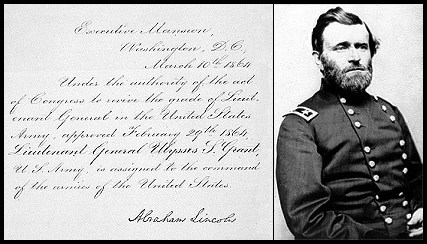 44 44
General Ulysses S. Grant and his appointment as Lieutenant General,
Commander of all United States Armies, by President Abraham Lincoln.
Click
HERE to read the Appointment.
Grant attached himself to General George G. Meade's Army of the Potomac.
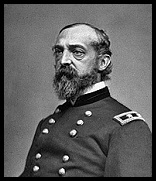
General George G. Meade 50
Although General Meade was the Army's Commander, the major decisions regarding
the Army of the Potomac were made by Grant. This caused Meade considerable
embarrassment and frustration which he expressed in his letters home
1
.
THE UNION PLAN
To prosecute the Eastern war, Grant planned simultaneous attacks by all Union
Armies against the Confederates. This would restrict the Confederates' ability to
move troops around in support of each other.
As part of this plan, the Army of the Potomac, with Grant, would move south from
Culpeper Court House, traveling east of the Confederate Army, and place itself
between Richmond, the Southern Capital, and Lee's Army, which was near Orange
Court House at the time.
2
This would force Lee into a fight which Grant felt would destroy the
Confederate Army.
UNION LOGIC
By traveling east of the Confederate army, rather than to the west, the Union
Army would have shorter supply lines (from the eastern rivers).
However, moving east of the Confederate army also meant that the Union army
would have to travel through the Wilderness, the same woods and undergrowth
that had caused Union General Joseph Hooker so much trouble at Chancellorsville
a year earlier.
|
|
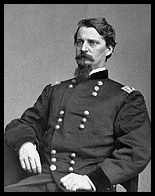 93
93
|
|
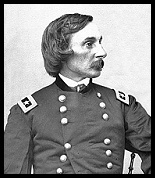 92
92
|
|
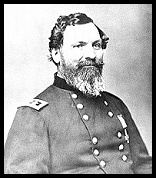 48
48
|
General Winfield S. Hancock
Union Second Corps
|
|
General Gouverneur K. Warren
Union Fifth Corps
|
|
General John Sedgwick
Union Sixth Corps
|
| |
THE ARMY OF THE POTOMAC MOVES
On May 4, the Army of the Potomac entered the Wilderness in two separate columns.
General Gouverneur K. Warren's Fifth Corps and General John Sedgwick's Sixth
Corps crossed the Rapidan at Germanna Ford (13) and proceeded southeast along
the Germanna Road.
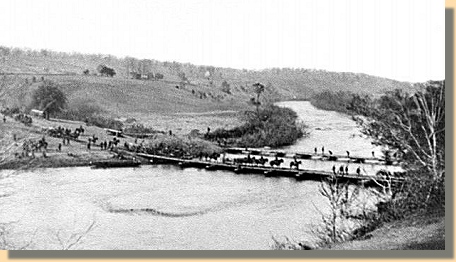 11 11
Germanna Ford on the Rapidan River - May, 1864. (13)
Union Artillery crossing before entering the Wilderness.
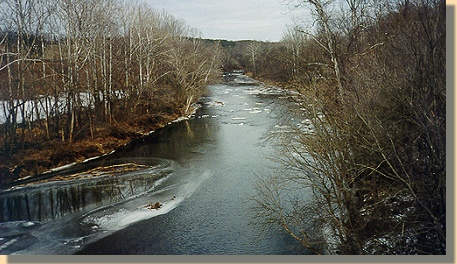
Germanna Ford on the Rapidan River - January, 2001. (13)
Taken from the modern Route 3 bridge (Old Germanna Road).
General Winfield S. Hancock's Second Corps, most of the Federal Cavalry, and the
army supply train, crossed at Ely's Ford, farther to the east (See the
Theater of Operations Map).
General Ambrose E. Burnside's Ninth Corps stayed back to defend Washington.
By nightfall the Fifth and Sixth Corps were strung out along the Germanna Road
and Hancock's Second Corps was at Chancellorsville.
- Ernest B. Ferguson - "Not War but Murder - Cold Harbor 1864" pages 23-25.
- I don't believe the case has been made that Grant intended to swing right
after he crossed the Rapidan and attack Lee's Army near Orange. Where he crossed
the Rapidan, how the cavalry was used, and how Grant proceeded after the
Wilderness, cause me to lean toward the explanation given here.
|
|
PAGE THREE
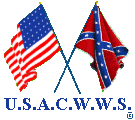 >
Photos
>
The Wilderness
>
Page 2
>
3
>
4
>
5
>
6
>
7
>
8
>
9
>
10
>
11
>
12
>
Photos
>
The Wilderness
>
Page 2
>
3
>
4
>
5
>
6
>
7
>
8
>
9
>
10
>
11
>
12
Notes
|
|





